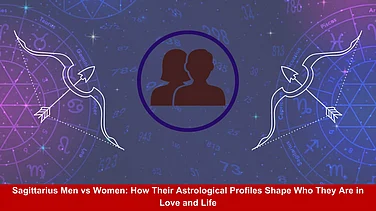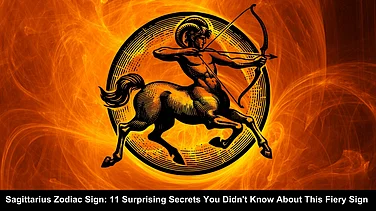Govardhan Puja is also known as Annakut or Padwa. This is a big festival that is mostly held in northern India. This puja is held just a day after Lakshmi puja, on the fourth day of Diwali. The Drik Panchang calendar says that Govardhan Puja will be held on November 2, 2024, as planned.
Govardhan Puja holds significant importance in Hindu culture, as it symbolises the deep connection between humanity and nature. The festival commemorates Lord Krishna’s divine act of lifting the Govardhan Hill to protect the people of Vrindavan from the wrath of Lord Indra. In addition, this day is significant because it is the day that a lavish feast, known as Annakut, is prepared. This feast is comprised of a variety of delicacies that are presented to the gods.
Govardhan Puja - Date & Shubh Muhurat:
According to the Drik Panchang, the auspicious timings or Shubh Muhurat, for Govardhan Puja 2024 are as follows:
This year, Govardhan Puja will be observed on November 2, 2024, Saturday.
Govardhan Puja Pratahkala Muhurat: 06:34 AM to 08:46 AM
Govardhan Puja Sayankala Muhurat: 03:23 PM to 05:35 PM
Pratipada Tithi Begins: 06:16 PM on Nov 01, 2024
Pratipada Tithi Ends: 08:21 PM on Nov 02, 2024
During this time, devotees perform rituals and offer prayers to Govardhan Hill, Lord Krishna, and cows, seeking blessings for prosperity and protection from all adversities.
Why is Govardhan Puja Celebrated?
The life of Lord Krishna is the source of the legend that governs the festival of Govardhan Puja. According to Hindu legend, the residents of Vrindavan would pray to Lord Indra, the deity of rain and thunder, to ensure that their crops received an acceptable amount of rainfall. Young Krishna told them to stop worshipping Indra and instead worship the Govardhan Hill, which gives cattle natural resources like food, shelter, and water.
Angered by this, Lord Indra unleashed torrential rains over Vrindavan. To protect the people and their livestock, Krishna lifted the entire Govardhan Hill with his little finger, sheltering everyone under it. The rains continued for seven days, but Krishna held up the hill until Lord Indra finally realised his mistake and stopped the downpour. This event showed people how important it is to respect nature and put an end to worshipping Indra too much.
The festival of Govardhan Puja is held in order to commemorate this incident, which is a representation of Krishna's protection and direction. It also emphasises the importance of respecting nature, as nature provides sustenance and protection for all living beings.
How is Govardhan Puja Celebrated?
Across India, the festival of Govardhan Puja is celebrated with a wide variety of rituals, prayers, and celebrations. During this celebration, people often engage in some specific activities which are stated as follows:
1. Annakut Offering:
Annakut, a big feast with over 56 different kinds of food given to Lord Krishna, is the most important part of Govardhan Puja. These offerings can include sweets, fruits, vegetables, cereals, and grains. Following the sacrifice, the food is given to those in need as prasad.
2. Worship of Govardhan Hill:
In some regions, devotees create small replicas of Govardhan Hill using cow dung, stones, or mud. They decorate these replicas with flowers, twigs, and lamps. People offer prayers and worship the hill, symbolising Krishna’s divine intervention. Milk and curd are often poured over the hill replica, representing the blessings of cows, which are deeply revered in Hindu tradition.
3. Go-Puja (Cow Worship):
According to Hinduism, cows are respected as the most holy animal. They are considered Go-mata, so they are very important in Govardhan Puja. People pray to the Go Mata for their happiness and prosperity. First, they clean them, decorate them with flowers, and feed them grass, sweets, and other foods. People worship cows as a sign of nature and mothers because they give us milk and food.
4. Processions and Festivities:
Big processions are used to celebrate the festival of Govardhan Puja. People celebrate the puja by religious singing and cultural shows at Mathura and Vrindavan. Religious people go to churches, especially the Govardhan Temple in Mathura, to pray and do parikrama, which means walking around the holy Govardhan Hill.
5. Govardhan Parikrama:
Devotees usually walk barefoot, which is commonly known as the Govardhan Parikrama around Govardhan Hill. It is considered to be one of the most important ceremonies that takes place on this day. It is thought that by performing this circumambulation, one will get blessings of prosperity, tranquillity, and protection. The Parikrama path is a route that is regarded to be extremely fortunate and covers a distance of around 23 kilometres.
6. Recitation of Govardhan Leela:
People recite the stories of how Krishna saved the people of Vrindavan as a form of Govardhan Leela at the time of Govardhan puja. They do Bhajans and kirtans, which are songs of worshipping Lord Krishna. They sang in the chorus. It is a very common practice of Govardhhan puja.
7. Lighting of Lamps:
Lamps and diyas are lighted around residences, temples, and the Govardhan replicas, just like on other Diwali days. This represents the light of Krishna's blessings and protection. Lighting lamps also represent the eradication of ignorance and the beginning of spiritual development.
Regional Variations:
Govardhan Puja is celebrated with great enthusiasm in Uttar Pradesh, especially in Mathura and Vrindavan, the birthplace of Krishna. It is also observed in Gujarat as part of the Gujarati New Year, where the day is called Padwa. In Maharashtra, it is celebrated as Bali Pratipada, honouring the return of King Bali to earth.
The festival of Govardhan Puja, as a whole, is a combination of devotion, adoration and, above all, community building. As a reminder of the importance of preserving the natural world and the environment, it also serves as a reminder of the protection and benefits that come from spiritual powers during times of difficulty.



















